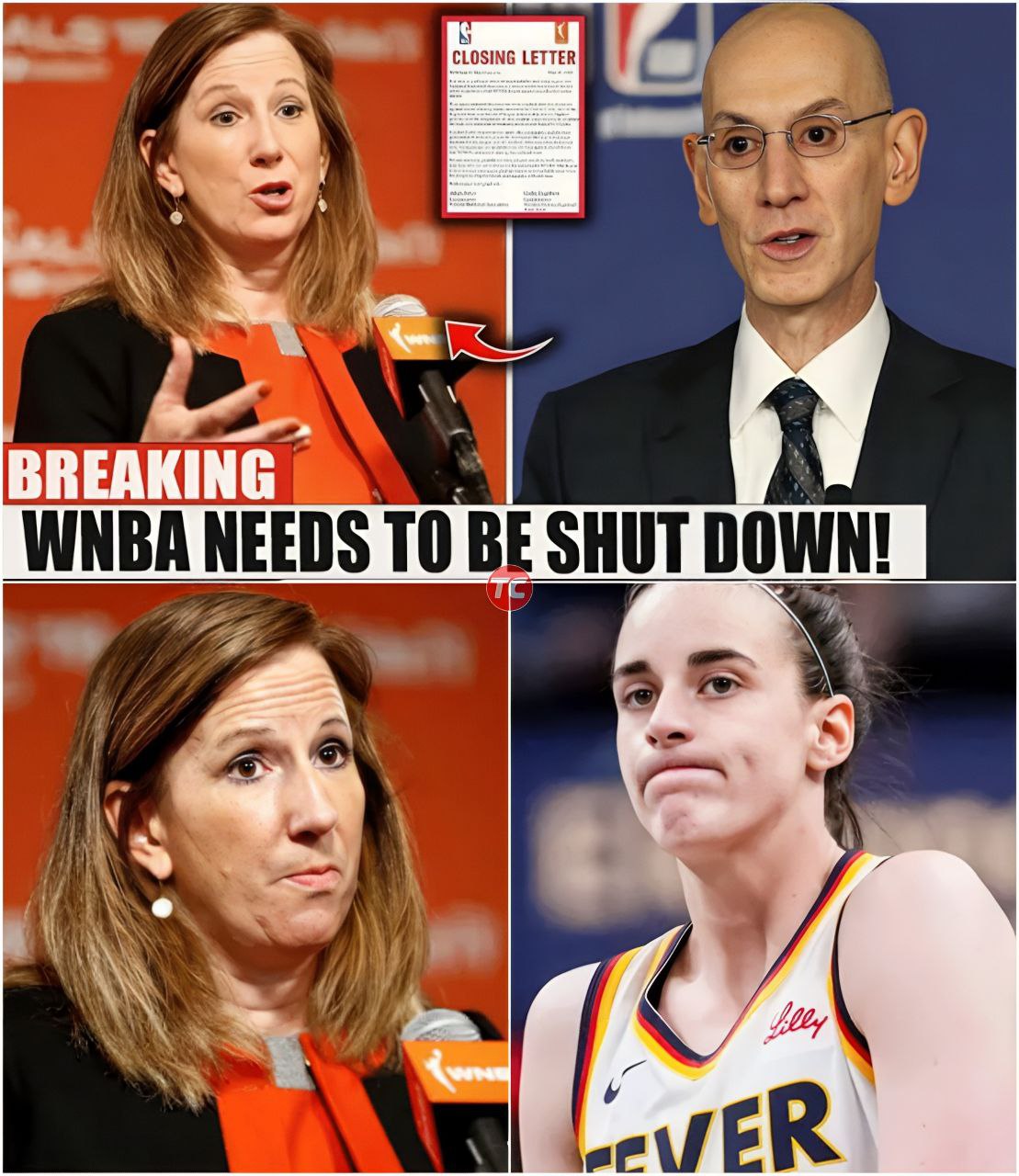The WNBA Faces a Perfect Storm: Caitlin Clark’s Injury and Referee Scandal Threaten League’s Momentum
The 2025 WNBA season, which began with unprecedented excitement and growing fan engagement, has suddenly hit a critical crossroads. The Indiana Fever’s superstar Caitlin Clark, widely regarded as the league’s premier talent and its primary financial engine, suffered a quad strain that will sideline her for at least two weeks. Simultaneously, the league is grappling with a corruption scandal involving referees, sparking widespread backlash from fans, players, and sponsors alike. Together, these issues have plunged the WNBA into crisis mode, threatening millions in lost revenue and shaking the foundation of its recent growth.
Clark’s injury is more than just a temporary setback for the Fever; it’s a seismic event with league-wide ramifications. Known for her electrifying play and record-breaking performances, Clark has been the central attraction driving ticket sales, television ratings, and merchandise revenue. Her absence means more than missed games—it jeopardizes the financial leverage players hoped to wield in upcoming contract negotiations.
The Fever had anticipated sellout crowds and packed arenas, even shifting games to larger venues to accommodate the surge in demand driven by Clark’s star power. Her injury forced cancellations and led to plummeting ticket sales, with some arenas experiencing empty sections and fans demanding refunds. This scenario mirrors the impact Lionel Messi has on Major League Soccer, where his presence or absence directly influences attendance and fan engagement. Unlike MLS, however, the WNBA has been reluctant to acknowledge Clark’s outsized influence, instead promoting a narrative of organic league growth that now appears fragile.

The timing of Clark’s injury could not be worse for WNBA players, who were preparing to push for significant pay raises, enhanced benefits, and improved working conditions in the upcoming collective bargaining agreement. The league’s recent expansion and record viewership had created optimism about leveraging this momentum for better compensation.
However, early data suggests that without Clark, television ratings could drop from 1.5 to 2 million viewers per game to as low as 400,000, and attendance figures could fall by 70% or more. This stark decline threatens to undermine players’ bargaining power, as team owners may argue that the league’s financial success is overly dependent on one player. Owners could use this as justification to limit salary increases and maintain tight control over costs, citing the risk of Clark’s injury or eventual retirement as a financial vulnerability.
Players face a difficult dilemma: while Clark’s success has elevated the league, it also exposes the fragility of its business model. Some analysts suggest that players might argue for higher salaries precisely because the league relies so heavily on Clark, emphasizing the need to develop additional stars and diversify revenue streams. Yet, this argument implicitly admits that the current growth is unsustainable and heavily concentrated.
Compounding the financial and competitive challenges is a growing scandal involving WNBA referees accused of corruption and biased officiating. Fans and players have voiced outrage over perceived unfair calls that have influenced game outcomes and damaged the league’s credibility. This controversy has further eroded fan trust and media coverage, intensifying the pressure on WNBA executives to restore integrity and transparency.
Sponsors, too, are reacting cautiously amid the turmoil, with some reconsidering their partnerships as public confidence wavers. The combination of a star player’s injury and officiating controversies has created a perfect storm that threatens to stall or even reverse the league’s recent gains.
The next two weeks, during which Clark will be sidelined, are critical for the WNBA. The league’s attendance and viewership numbers without its marquee player will provide a harsh reality check on its financial health and growth trajectory. If the numbers plummet as expected, players’ negotiating positions will weaken, and team owners will gain leverage to control costs.
This crisis also raises broader questions about the league’s long-term sustainability and star development. Beyond Clark, only a handful of players like Paige Bueckers and Breanna Stewart draw notable attention, but none match Clark’s ability to fill arenas and boost ratings. Without cultivating multiple stars, the WNBA risks remaining overly dependent on a single individual, making financial planning and growth precarious.
For now, the league must confront these challenges head-on—addressing officiating integrity, supporting players through the injury crisis, and developing a more robust, diversified fan base. How the WNBA navigates this turbulent period will shape the future of women’s professional basketball in America.
This moment is a sobering reminder that while Caitlin Clark has propelled the WNBA to new heights, the league’s foundation remains vulnerable. The coming weeks will determine whether the WNBA can build a sustainable multi-star league or remain tethered to the fortunes of one transcendent talent. The stakes have never been higher for players, owners, and fans alike.
